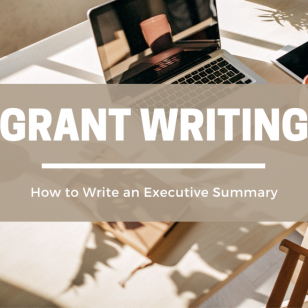By Kelsey Boudin
President and Founder, Southern Tier Communications Strategies, LLC
A grant letter of intent is an ice-breaker. Much like a cover letter, it allows you to introduce your organization and invite the funder to be a valued partner in your initiative (a.k.a, give you money).
But there are some key differences. In my experience, grantors require a letter of intent, or LOI, as a gatekeeper. While a cover letter is good form for any introductory correspondence, an LOI essentially asks a funder for permission to submit a full proposal.
Permission? Yes, permission to further discuss your plan. But why? They’re busy, that’s why. And rather than sift through hundreds of full proposals — likely comprising terabytes of data, reams of paper and weeks of reading — letters of intent offer an accurate synopsis of worthiness. Funders exist to fund projects and initiatives matching their priorities. Why waste theirs and grantseekers’ time reviewing bad fits?
A Good Grant Letter of Intent Can Open the Gate
There’s a greater sense of urgency with a letter of intent. But don’t fret. Here’s how to make your LOI memorable.
Follow the Format
The good news here is funders are typically very prescriptive about LOI submissions. If you follow the directions, it’s hard to muck up. Most grantors today use an online grants portal that won’t accept any submission outside the parameters. The portal will likely open to a survey of questions (usually no more than three) that prompt you to explain your proposal (in a limited number of characters or words).
If the funder requires no specific LOI format, revert to a general, professional, respectable cover letter format. Keep it to a page. I always say it should be between 250 and 400 words — but good luck keeping it to one page in 400 words. And, of course, whether they require 11-point Times New Roman with 1-inch margins or 10-point Zapf Dingbats with 3-inch margins, give them EXACTLY what they ask for.
Be Strategically Descriptive
I know it’s hard in such a limited space. How could you possibly describe all of the great elements of your proposal in just x-number of words or characters? Simply enough, you just have to.
Get muscular with your writing. Omit needless words. Why say something in nine words when five will do? (Helpful hints: Superfluous adverbs like “really” and “certainly” add no value. If it’s “real” and “certain,” you don’t need to say it. Also, eliminate worthless cliches and jargon.)
If there are questions to answer, answer only what those questions ask. No need for getting overly creative. Anything beyond something like “Our organization invites your foundation to help us provide books to poor school children” is too much.
Be Bold With Your Ask
Out with it! Don’t dance around your grant ask. Be upfront with how much funding you need, even if it’s a mere estimate in the early stages of grant development. Being forthright about the dollars and cents is especially important when you’re allotted only a few brief words. “With a grant of $64,000, our organization will hire a 1.0 FTE Community Outreach Coordinator.”
Concise, specific and honest.
Paint the Little Big Picture
That word count is dwindling fast. You don’t have space to spell out every little detail. An LOI is an executive summary. Indicate:
- Who you are
- What you do
- What you need
- What you’ll do if you get it
While you are writing about your organization’s needs, be sure to frame the conversation with an outward focus. It’s not all about you. It’s about what your organization will do to benefit the communities you serve (with the necessary funding to push you in the right direction).
Connect the Dots
Grantors have priorities. Their grants reflect them. If your organizational mission and proposal do not match those priorities, requesting funding won’t be worth the effort. Even a loose or a vague fit would be highly iffy.
A request for proposals from the Department of Education may require objectives toward physical education programs in grades K-5. An open solicitation from the Ralph C. Wilson, Jr. Foundation may seek projects benefiting caregivers. Your brief LOI must connect the dots between such missions and your proposal.
Grant Letters of Intent Give Funders What They Ask
Grant writing is an incredibly competitive process. Try as they might, funders couldn’t possibly fund every good initiative across their desks. A letter of intent, when requested, gives them a snapshot of you and your program.
Check all their boxes and you’re more likely to earn the bigger conversation. Feel free to reach out to an experienced grant writer for guidance.







